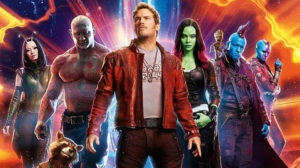Historical films:
Toy Story: Innovated a popularised 3D animation, directed by John Lasseter
The Wizard of Oz: First movie to use colour, directed by Victor Fleming, Mrvyn LeRoy, King Vidor, George Cukor and Norman Taurog
Dr Strangelove: First movie to popularise the concept of political satire, Directed by Stanley Kubrick
Once upon a time in the West: Created a lot of the tropes frequently used in the western genre, Directed by Sergio Leone
Seventh Samurai: First Japanese produced film to find mainstream recondition outside of Japan. Directed by Akira Kurosawa
Alphaville: Popularised the genre of French new wave, Directed by Jean-Luc Godard
Art Films:
The shape of Water: A monster story inspired by some of H.P. Lovecrafts books, Directed by Guillermo del Toro
Submarine: A romantic drama about a boy trying to keep his family together, Directed by Richard Ayoade
Manhattan: A Woody Allen romantic comedy, Directed by Woody Allen
Love Simon: A comedy about a boy named Simon trying to tell his family he is gay, Directed by Greg Berlanti.
Mainstream Films:
Deadpool 2, A superhero comedy where the hero fights a cyborg, Directed by David Leitch
A bugs life: Pixar’s Second animated film about a group of bugs trying to fend of grasshoppers, Directed by John Lasseter
The breakfast club: A teen comedy about a group of people in detention, Directed by John Hughs
Battleship Potemkin: A Russian propaganda movie about a battle ship being revolted by the angry sailors working on it, Directed by Sergei Eisenstein
Fitzcarraldo: About a man getting funds for a opera house by smuggling rubber on a boat, Directed by Werner Herzog
This shows that there are a lot less Historical or innovative films being made, losing a lot of originality that could be found in early film. However there has been a dramatic increase of mainstream films recently like Deadpool 2 and A bugs life. However, this isn’t a bad thing as the quality of mainstream and art films like Deadpool 2 and The shape of Water have been constantly high








